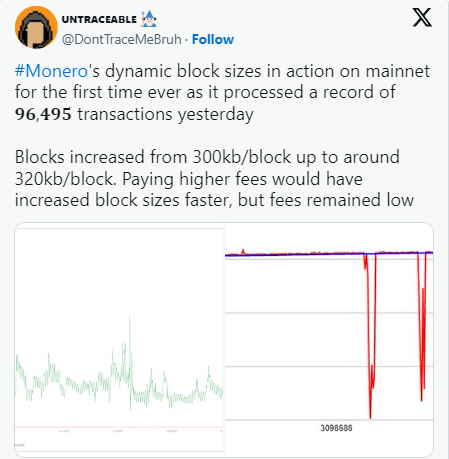Monero (XMR) was not having the best time last month. Following its delisting by Binance on February 20, there was a significant price drop. After this event, the leading privacy coin reclaimed the $150 price region and, more importantly, refreshed its record with over 100,000 daily transactions.
Monero Network Transaction Count
While Monero’s network continues to attract attention, it reached an all-time high (ATH) in daily transaction count on March 5, capturing all the focus. On that date, according to BitInfoCharts, 96,495 daily transactions were performed, far exceeding the previous record of 60,305 transactions recorded on August 12, 2022.
It would be accurate to say that it has since surpassed this level. On March 6, a total of 102,708 confirmed transactions were completed.

XMR Price Analysis
Monero’s recent price movements have also been noteworthy. Looking back, after the delisting announcement, XMR’s price dropped from $165 to $101 on February 6. On the other hand, the approximately 39% loss during this period was significantly recovered as the price moved up to $129 on February 7.
Binance finally delisted Monero on February 20. Comparing the opening and closing of the day, there was a 10% change in price within 24 hours. Since that day, XMR has experienced a strong price movement, rising to $153. At the time of writing, it is trading at $139.58.
Interestingly, Monero defied the market and has seen an increase of over 27% since the day it was delisted by Binance, which could indicate investors’ continued interest in privacy projects.

Monero (XMR) Commentary
One of the biggest criticisms of Bitcoin (BTC) is the long waiting times and high fees due to limited transaction capacity. So, how did this situation reflect on Monero, which hosts over 100,000 daily transactions?
A user named Untraceable shared a post highlighting Monero’s dynamic blocks. Notably, he mentioned that the network had to use its dynamic blocks for the first time – possibly due to the high volume linked to the transaction count.
He also noted that the average block size increased from 300 kb to 320 kb per block during the transactions.


 Türkçe
Türkçe Español
Español









